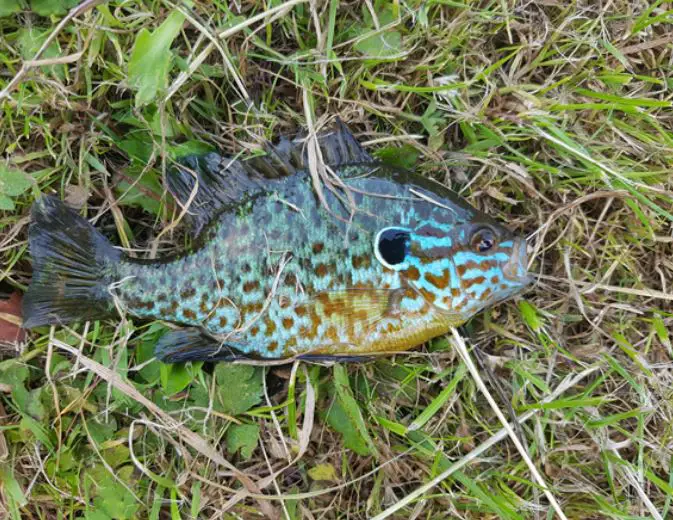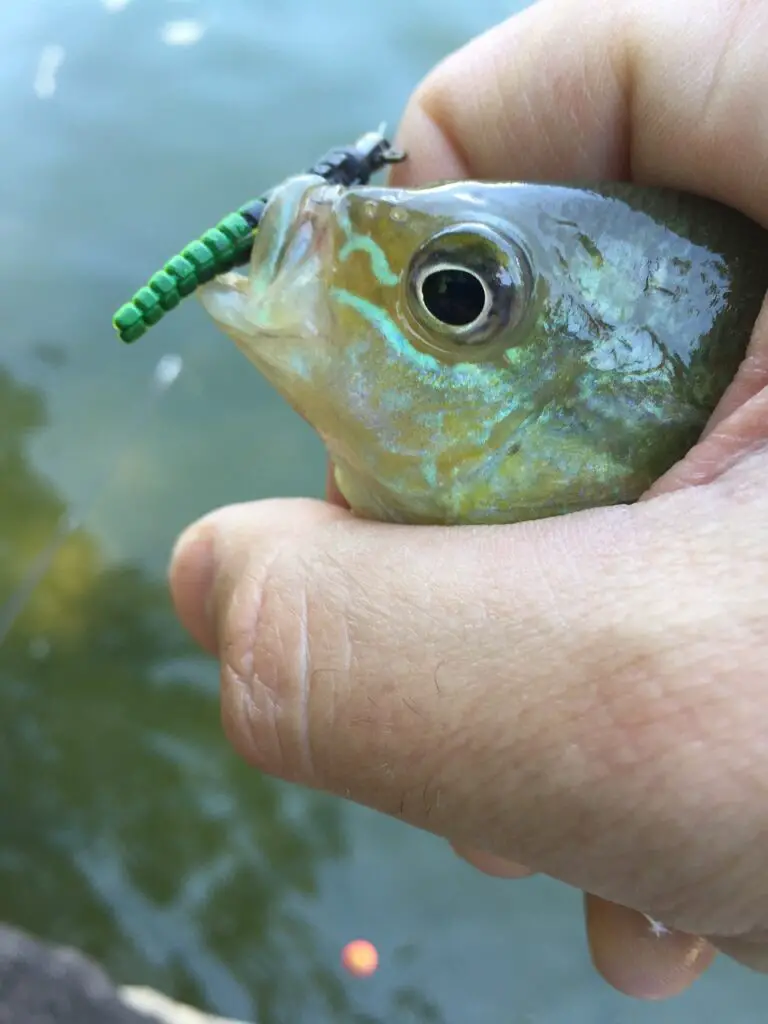Pumpkin Seed fish, scientifically known as Lepomis gibbosus, are a species of freshwater sunfish native to North America. Their vibrant colors, distinct markings, and unique pumpkin seed-shaped bodies make them a fascinating fish to observe. In this article, we will dive into the world of Pumpkin Seed fish, exploring their physical characteristics, habitat, feeding habits, conservation, and more.
You may also want to read about the chain pickerel.
Overview of Pumpkin Seed Fish
Pumpkin Seed fish are small-sized sunfish that belong to the Centrarchidae family. They are commonly found in lakes, ponds, rivers, and streams throughout North America. Let’s take a closer look at their unique features and behaviors.
Physical Characteristics of Pumpkin Seed Fish
Pumpkin Seed fish have a laterally compressed body, resembling a pumpkin seed in shape, hence their name. They display a range of striking colors, including various shades of olive, green, and blue. Their sides are adorned with dark vertical bars and speckles, while their belly is usually lighter in color. The posterior part of their body is adorned with a vibrant orange or red spot, resembling the “ear” of a pumpkin seed.
Habitat and Distribution

Pumpkin Seed fish inhabit a wide range of freshwater habitats across North America. They can be found in lakes, ponds, reservoirs, slow-moving rivers, and streams with vegetation and ample cover. They prefer areas with aquatic plants or submerged structure, as these provide them with shelter and foraging opportunities.
Feeding Habits of Pumpkin Seed Fish
Pumpkin Seed fish are primarily omnivorous, feeding on a variety of aquatic invertebrates, small crustaceans, insects, and plant matter. They use their specialized pharyngeal teeth to crush and consume their prey. Their feeding habits play a crucial role in controlling populations of aquatic insects and maintaining a balanced ecosystem.
Reproduction and Life Cycle
Pumpkin Seed fish reach sexual maturity at around two years of age. Spawning typically occurs from late spring to early summer when water temperatures are favorable. During courtship, males establish and defend nesting territories, attracting females with displays of vibrant colors. Females lay their adhesive eggs on submerged vegetation or structures, which are guarded and fanned by the males until hatching.
Importance in Aquatic Ecosystems
Pumpkin Seed fish play an essential role in freshwater ecosystems. They contribute to the food web as both predators and prey. Their feeding habits help control populations of aquatic insects, while also serving as a food source for larger predatory fish. Their presence indicates a healthy and balanced aquatic environment.
Tips for Fishing Pumpkin Seed Fish
For fishing enthusiasts, targeting Pumpkin Seed fish can provide an enjoyable angling experience. Here are a few tips to increase your chances of success:
- Location: Look for areas with vegetation, submerged structures, or near the edges of aquatic plants, as Pumpkin Seed fish tend to congregate in these areas.
- Bait and Lures: Use small hooks and lightweight tackle with natural baits like worms, insects, or small pieces of fish. Artificial lures that mimic small insects or small baitfish can also be effective.
- Presentation and Technique: Present your bait or lure in a natural and enticing manner. Pumpkin Seed fish are known to be attracted to slow, subtle movements. Avoid aggressive or jerky motions that may scare them away.
- Time of Day: Pumpkin Seed fish are most active during daylight hours, especially in the early morning and late afternoon. Plan your fishing trips accordingly to maximize your chances of success.
- Patience and Observation: Be patient and observant while fishing for Pumpkin Seed fish. Look for signs of their presence, such as ripples or small movements in the water. Take note of their feeding behavior and adjust your approach accordingly.

Conservation and Management
Conserving the population of Pumpkin Seed fish and their habitats is essential for maintaining healthy aquatic ecosystems. Here are some aspects to consider:
- Habitat Preservation: Protecting and preserving their natural habitats, including wetlands and freshwater ecosystems, is crucial for the long-term survival of Pumpkin Seed fish.
- Sustainable Fishing Practices: Practice catch-and-release fishing to help maintain healthy fish populations. Follow local regulations and size limits to ensure responsible angling.
Common Misconceptions
There are a few misconceptions surrounding Pumpkin Seed fish that are important to address:
- Invasive Species: Although Pumpkin Seed fish have been introduced to some areas outside their native range, they are not considered invasive in most cases. They have coexisted with native fish species for many years.
- Toxicity: Pumpkin Seed fish are not toxic or harmful to humans. They are safe to handle and observe in their natural environment.
Pumpkin Seed Fish as Aquarium Pets
Due to their striking colors and unique appearance, some fish enthusiasts keep Pumpkin Seed fish in aquariums. However, it’s important to note that they require specific care requirements and a suitable aquatic environment to thrive. Adequate tank size, water quality, and appropriate tank mates should be considered when keeping Pumpkin Seed fish as pets.
Conclusion
Pumpkin Seed fish are captivating freshwater sunfish known for their distinctive appearance and role in aquatic ecosystems. Their vibrant colors, pumpkin seed-shaped bodies, and engaging behaviors make them an intriguing species to study and observe. By understanding their habitat, feeding habits, and importance in maintaining a balanced ecosystem, we can appreciate the beauty and significance of Pumpkin Seed fish in our natural world.
FAQs
- Are Pumpkin Seed fish aggressive?
- Pumpkin Seed fish are generally not aggressive. They are peaceful species that coexist well with other fish in their natural habitats.
- Can Pumpkin Seed fish be kept in community aquariums?
- Pumpkin Seed fish can be challenging to keep in community aquariums due to their specific care requirements and potential territorial behavior. It’s best to consult with experienced aquarium hobbyists or experts before attempting to keep them in a community setup.
- Do Pumpkin Seed fish change colors?
- Pumpkin Seed fish can exhibit changes in coloration based on their mood, breeding condition, or environmental factors. However, these color changes are typically within their normal range and not drastic transformations.
- Are Pumpkin Seed fish endangered?
- Pumpkin Seed fish are not considered endangered. However, localized threats such as habitat destruction, pollution, and invasive species can impact their populations. Conservation efforts and responsible management are important to ensure their long-term survival.
- Can Pumpkin Seed fish be caught for food?
- While Pumpkin Seed fish are edible, they are not typically targeted for consumption due to their small size and bony structure. Most anglers practice catch-and-release fishing when targeting Pumpkin Seed fish.